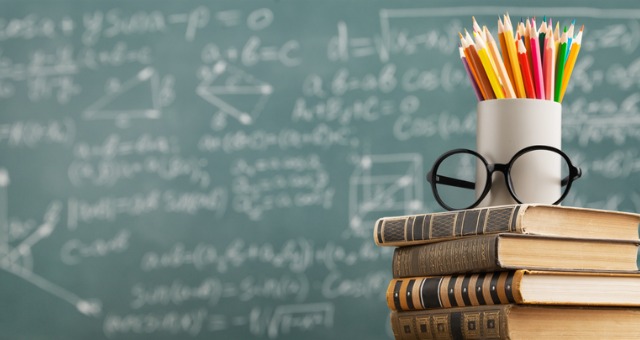Effective Primary Science Tuition Singapore for Better Exam Results
Effective Primary Science Tuition Singapore for Better Exam Results
Blog Article
A Comprehensive Guide to the Various Discovering Approaches in Key Scientific Research Instruction
The expedition of diverse learning methods in main scientific research direction provides a chance for instructors to enhance student engagement and comprehension significantly. By analyzing hands-on learning techniques, inquiry-based approaches, and collective methods, we can recognize reliable techniques that cater to various learning designs.

Hands-On Learning Methods
Hands-on knowing techniques play a crucial duty in key science direction, engaging trainees in active exploration and trial and error. These techniques permit students to interact directly with phenomena and products, promoting a much deeper understanding of clinical ideas. By utilizing manipulatives, models, and real-life experiments, teachers create an environment where pupils can observe, assume, and check their concepts.
Such methods not just improve understanding but likewise grow critical reasoning and problem-solving skills. When pupils take part in activities like constructing straightforward equipments, growing seeds, or carrying out chain reactions, they are motivated to ask inquiries and seek answers via their own monitorings. This experiential method assists to demystify complex scientific principles, making them more relatable and accessible.
Furthermore, hands-on understanding promotes cooperation among peers, as students commonly function in groups to perform experiments or share findings. This team effort not just enhances their understanding experience but additionally establishes important social skills. Inevitably, integrating hands-on methods in primary science guideline cultivates a long-lasting love of knowing and interest about the all-natural world, laying a strong structure for future scholastic searches in scientific research and past.
Inquiry-Based Understanding
Inquiry-based discovering is an instructional strategy that encourages students to ask concerns, explore phenomena, and create their very own understanding of clinical ideas. This method shifts the focus from typical teacher-led instruction to a more student-centered experience, where learners take the initiative in their academic trip. By fostering inquisitiveness, inquiry-based understanding advertises much deeper involvement with the material, permitting students to explore topics in a meaningful context.
In method, this method typically involves hands-on experiments, monitorings, and important thinking tasks that line up very closely with the clinical method. Pupils are motivated to formulate theories, style investigations, and analyze data, which grows important abilities such as analytic and analytical reasoning. The function of the instructor in this framework is to promote expedition, assisting pupils through the inquiry procedure while motivating independent thought and collaboration.
In addition, inquiry-based understanding nurtures a feeling of ownership over the learning process, encouraging students to seek understanding actively. This approach not only enhances understanding of clinical principles but likewise fosters a long-lasting love for understanding, gearing up students with the abilities needed to navigate a significantly complex world.
Collaborative Understanding Approaches
Joint discovering approaches empower trainees to participate in significant communications with peers, promoting a shared duty for their educational outcomes. In key scientific research direction, these approaches motivate learners to work with each other to discover clinical ideas, solve problems, and perform experiments (primary science tuition Singapore). By getting involved in group activities, trainees can utilize diverse perspectives, permitting richer understanding and retention of clinical understanding
One trick facet of collective understanding is the emphasis on interaction skills. Students have to express their thoughts, pay attention actively to others, and negotiate ideas, every one of which are critical competencies in both real-world and academic contexts. This social communication not only enhances their understanding of clinical concepts yet additionally advertises team effort and dispute resolution skills.
In addition, collective learning often causes raised inspiration and engagement. They are a lot more likely to take ownership of their learning trip when pupils see the worth of their contributions within a group. Educators can facilitate this process by creating organized team tasks that straighten with curriculum goals while supplying support on effective cooperation strategies. On the whole, integrating collaborative knowing methods in main scientific research direction cultivates a dynamic learning atmosphere that prepares pupils for future scholastic and social challenges.
Modern Technology Combination in Science
The integration of innovation in main science direction enhances learning experiences by providing ingenious devices and sources that sustain numerous teaching approaches, including collective knowing - primary science tuition Singapore. Using digital platforms, simulations, and interactive applications permits pupils to involve deeply with scientific principles, assisting in a much more hands-on strategy to understanding
Digital research laboratories, for circumstances, make it possible for learners to conduct experiments safely and efficiently, promoting inquiry-based understanding. These devices can simulate real-world scientific situations, allowing pupils to imagine intricate processes that would be difficult to duplicate in a standard classroom setup. Innovation cultivates communication and cooperation amongst trainees, as they can share findings and function together on jobs through on the internet platforms.
Additionally, multimedia discussions and instructional video clips can improve lessons by accommodating varied discovering designs, making abstract concepts more easily accessible. Information evaluation devices additionally empower trainees to collect and analyze clinical data, enhancing essential thinking skills. Generally, the calculated incorporation of innovation in main scientific research guideline not just boosts engagement but likewise prepares trainees for a technically sophisticated society, equipping them with crucial abilities for future clinical undertakings.
Set Apart Instruction Approaches
Set great site apart direction techniques are crucial for dealing with the diverse needs of students in key science education and learning. These strategies make it possible for educators to tailor their training techniques to suit differing capacities, passions, and finding out designs within the class. By utilizing distinguished instruction, educators can create a comprehensive atmosphere that promotes engagement and boosts understanding of clinical ideas.
One efficient technique is to make use of flexible organizing, which permits pupils to work together with peers at similar ability degrees or with differing point of views. This strategy encourages peer learning and advertises essential thinking. Furthermore, providing options in jobs can equip pupils, allowing them to pick tasks that reverberate with their rate of interests while still satisfying curricular goals.
Furthermore, incorporating tiered jobs is another important technique. By making jobs with differing degrees of intricacy, instructors can make sure that all trainees are suitably challenged, no matter of their proficiency. Utilizing developmental assessments to assess comprehending additional allows instructors to readjust their training techniques dynamically, ensuring that each student receives the support they need.
Inevitably, implementing separated guideline approaches in key science education not only enhances pupil learning outcomes however also grows an interest for science, preparing students for future scholastic quests.

Conclusion
In summary, reliable main scientific research guideline requires a multifaceted strategy that incorporates hands-on discovering, inquiry-based approaches, and joint techniques. The integration of modern technology and separated direction even more caters to diverse knowing designs, cultivating an environment for expedition and essential reasoning. By implementing these methods, educators can enhance trainee interaction and understanding, eventually nurturing a lifelong interest for scientific research and questions. Such detailed techniques are important for establishing notified and interested future researchers.
The exploration of diverse discovering approaches in key science direction he has a good point presents a chance for educators to enhance pupil engagement and understanding considerably.Hands-on understanding strategies play a crucial function in main scientific research direction, involving pupils in energetic expedition and testing.Inquiry-based discovering is an instructional strategy that encourages trainees to ask concerns, explore phenomena, and create their very own understanding of clinical ideas.Joint understanding approaches empower trainees to involve in purposeful interactions Discover More with peers, cultivating a shared responsibility for their instructional results. On the whole, integrating joint knowing strategies in main science direction grows a dynamic learning environment that prepares pupils for future academic and social obstacles.
Report this page